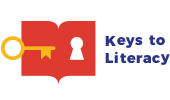How End of Year Data Prepares You for Beginning of the Year Success, Part 2: What Do our Teachers Need?

May is one of the busiest times of the year in schools. There are field days, field trips, awards ceremonies, musical concerts, spring festivals and still somehow, we manage to squeeze in, end-of-year testing. Too often end-of-year testing is seen as another mandate or item for compliance yet, using it wisely can bear the fruits of invaluable professional development insights for your teaching staff. We have the opportunity to harness the information found within those assessments to guide our professional development decisions which ultimately will help teacher and student performance.
As I mentioned in last month’s leadership blog, found here, the information found within students’ end-of-the-year foundational reading assessments is the key to starting the following year off right and ensuring students who are struggling to read are able to receive interventions as quickly as possible. Once again, after the end of year benchmark data is gathered, we should not “close the books” on the year’s reading achievement. Instead, we should focus our attention on how we can use the information to determine the course for back-to-school professional development for our teachers or to establish a professional development plan for the following year.
And so, once assessments have been completed, building and/or district leaders can then “dig in” and examine trends among their teaching staff. These trends will tell us what types of support and in what area(s) our teachers need further development. I’ve outlined a procedure below that will uncover valuable insights into the strengths and weaknesses of your teaching staff and therefore be useful in helping to develop PD plans for each teacher.
Questions to ask about using end-of-year benchmark data:
Benchmark data is typically collected three times per year, beginning, middle and end. All foundational reading assessments will allow you to sort the data either by school, grade and class/teacher level. Examine benchmark data by first looking at each grade level.
Ask the following questions:
- What grade level moved the most students from the beginning-of-the-year (BOY) to the end-of-the-year (EOY) up one instructional level?
- What grade level maintained the most students at grade level from BOY to EOY proficiency/benchmark?
- Were there certain grade levels who moved children who were at benchmark at the beginning of the year to below and well below benchmark at the end of the year?
Looking at grade level data allows you, the principal or school leader, to know what grade levels are performing well in their instructional endeavors and who might not be performing as you had hoped. Remember, foundational reading assessments are just as much about how students are doing as they are about how teachers are doing.
The next step is to examine this benchmark data by teacher level. Using what has been captured regarding grade level data, within each grade level ask the following questions regarding teacher level, again comparing beginning of the year data with end of year data.
- Was there one particular teacher who moved the most students from the beginning-of-the-year (BOY) to the end-of-the-year (EOY) up one instructional level?
- If yes to the above, what is it that you see that teacher doing that perhaps they could share with their counterparts?
- What teacher within each grade level maintained the most students at grade level from BOY to EOY proficiency/benchmark? If there was a low number of students at benchmark at the beginning of the year in all classrooms, and that low number maintained throughout the year, that may be an indication that universal instruction is not where it should be. What help do the teachers need? Do they have the right core materials? Are they using their core materials correctly? Do their core materials adequately address all components of literacy instruction? What sort of expectations do they have for students? Do they believe all students can read at grade level? Is instruction being differentiated so that all students can learn at high levels?
- Were there certain teachers within a grade level that moved children who were at benchmark at the beginning of the year to below and well below benchmark at the end of the year? If so, this is a serious problem. This very much indicates that universal instruction is not being performed as needed. What do you see when you make classroom observations? Are students in text? Are all components of literacy instruction being taught? Is the instruction explicit and systematic? Is the literacy block a fluid time where one skill builds into the next and the block culminates with students applying the skills they have been taught to reading in text?
Click here to receive an end-of-year benchmark data protocol that can be used for each grade level that will help you analyze your end of year foundational reading assessment data. Once you have examined the benchmark data for each grade level and its teachers, it’s time to dig further to specifically see what specific literacy skills your teachers may need professional development to help improve.
Examining the subskills within the end-of-year benchmark data
There may be one or two specific subskills found within your foundational reading assessment in which teachers may not understand their importance. This lack of understanding has two significant outcomes, 1) not teaching the subskills in an aligned, robust fashion and 2) not differentiating or providing interventions in the area of students’ need with the consequence of students not meeting grade level expectations.
Listed below are goals that students should be able to meet at the end of each year and the associated foundational reading assessment subskills. In reviewing the end-of-year subskills within foundational reading assessments, if there is a teacher with a preponderance of students not meeting that subskill, that is an indication that professional development for teaching that subskill may be necessary.
Kindergarten
| Goals for Mastery at EOY | Assessment Subskill Associated with Goal |
| Letter Names
Basic phoneme awareness—including identifying, segmenting and blending
Basic letter sound correspondence |
Letter naming fluency
Phonemic Segmenting fluency Letter sound fluency
Nonsense Word Fluency |
First Grade
| Goals for Mastery at EOY | Assessment Subskill Associated with Goal |
| Awareness of phonemes in complex syllables (end of first grade)
Letter sound correspondence with phonemes to graphemes |
Phonemic Segmenting fluency
Letter sound fluency
Nonsense word fluency, correct letter sound, whole words read |
Second Grade
| Goals for Mastery at EOY | Assessment Subskill Associated with Goal |
| Orthographic mapping
Reading fluency |
Whole words read
Oral Reading Fluency |
Third Grade through fifth or sixth grades
| Goals for Mastery at EOY | Assessment Subskill Associated with Goal |
| Reading fluency
Text comprehension |
Oral Reading Fluency
Accuracy Words Read Correct per Minute
Maze Passages
|
After thoroughly examining your benchmark data, along with the associated subskills, you may have found trends within the data. Beginning with the larger picture, do your teachers have the adequate materials necessary that will provide your students with the opportunity to achieve grade-level mastery? Do all of your teachers understand how children learn to read? Is there broad professional development that needs to be provided?
And finally, focusing on the more nuanced components of literacy ask the following:
Do your teachers know how to teach all of the components of reading to a level that students succeed? Are they able to differentiate their instruction so that those students reading below in a certain area can meet mastery?
Examining student data offers powerful insights into how your teachers are teaching. If our goal is to ensure that 100% of our students read at grade level, then we must ensure 100% of our teachers have the skills to do so. By running through the steps above, a school’s leadership will be able to determine what it is that teachers really need in order to improve student literacy outcomes.

 Our Literacy Leadership team has expanded thanks to our partnership with the Schools Cubed consulting team, led by Pati Montgomery. Pati has held roles as a classroom teacher, elementary and middle school principal, district leadership position and was the executive director of literacy for the state of Colorado where she led the implementation of one of the first evidence-based literacy legislation in the country.
Our Literacy Leadership team has expanded thanks to our partnership with the Schools Cubed consulting team, led by Pati Montgomery. Pati has held roles as a classroom teacher, elementary and middle school principal, district leadership position and was the executive director of literacy for the state of Colorado where she led the implementation of one of the first evidence-based literacy legislation in the country.
Leave a Reply